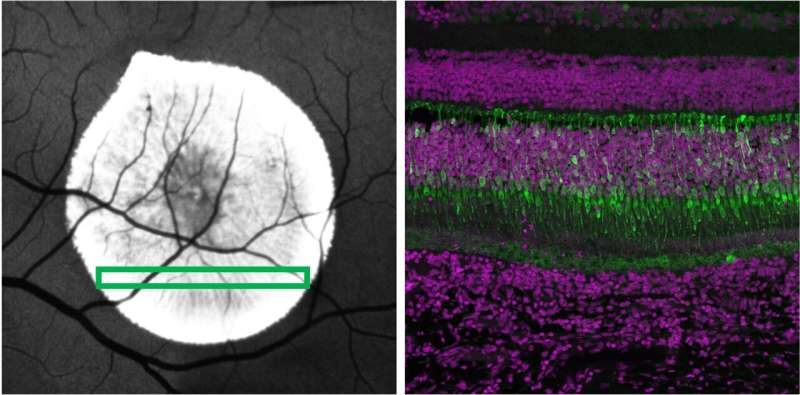This article has been reviewed according to Science X's editorial process and policies. Editors have highlighted the following attributes while ensuring the content's credibility:
fact-checked
trusted source
proofread
Lipid nanoparticles research closing in on genetic treatments for hereditary lung disease, vision loss

Researchers who work with tiny drug carriers known as lipid nanoparticles have developed a new type of material capable of reaching the lungs and the eyes, an important step toward genetic therapy for hereditary conditions like cystic fibrosis and inherited vision loss.
Findings of the study led by Gaurav Sahay and Yulia Eygeris of the Oregon State University College of Pharmacy and Renee Ryals of Oregon Health & Science University were published today in the Proceedings of the National Academy of Sciences.
Unlike other types of lipid nanoparticles that tend to accumulate in the liver, the ones in this study, based on the compound thiophene, are able to navigate their way to the tissues of the lungs and retina, where they deliver their therapeutic payload. The researchers refer to these new lipids as Thio-lipids.
The collaboration demonstrated, by using animal models, the possibility of using Thio-lipids in lipid nanoparticles to deliver messenger RNA, the technology underpinning COVID-19 vaccines, to combat genetic blindness and pulmonary disease.
"These nanoparticles filled with fatty lipids can encapsulate genetic medicines like mRNA and CRISPR-Cas9 gene editors, which can be used to treat and even cure rare genetic diseases," said Eygeris, a senior research associate at OSU. "Chemical structures of the lipids determine how potent are the lipid nanoparticles and which organ they can reach from the bloodstream."
Lipids are organic compounds containing fatty tails and are found in many natural oils and waxes, and nanoparticles are tiny pieces of material ranging in size from one- to 100-billionths of a meter. Messenger RNA delivers instructions to cells for making a particular protein.
With the coronavirus vaccines, the mRNA carried by the lipid nanoparticles instructs cells to make a harmless piece of the virus' spike protein, which triggers an immune response from the body.
As a therapy for vision impairment resulting from inherited retinal degeneration, the mRNA would instruct cells in the retina—which don't work right because of a genetic mutation—to manufacture the proteins needed for sight. Inherited retinal degeneration, commonly abbreviated to IRD, encompasses a group of disorders of varying severity and prevalence that affect one out of every few thousand people worldwide.
An example of a genetic pulmonary condition is cystic fibrosis, a progressive disorder that results in persistent lung infection and affects 30,000 people in the U.S., with about 1,000 new cases identified every year.
One faulty gene—the cystic fibrosis transmembrane conductance regulator, or CFTR—causes the disease, which is characterized by lung dehydration and mucus buildup that blocks the airway.
The thiophene-based lipid nanoparticle study, which involved mice and non-human primates, stems from a project to address limitations associated with the current primary means of delivery for gene editing: a type of virus known as adeno-associated virus, or AAV.
"AAV has limited packaging capacity compared to lipid nanoparticles and it can prompt an immune system response," said Sahay, a professor of pharmaceutical sciences. "It also doesn't do fantastically well in continuing to express the enzymes the editing tool uses as molecular scissors to make cuts in the DNA to be edited."
Sahay calls the Thio-lipid findings "highly encouraging" but says more studies are needed, including research on the lipids' long-term impact on retinal health.
"But we think our results serve as a proof of concept and we will continue to explore Thio-lipids in potential treatments of pulmonary and retinal genetic diseases," he said.
Other OSU College of Pharmacy researchers contributing to the study were Mohit Gupta, Jeonghwan Kim, Antony Jozic, Milan Gautam, Jonas Renner, Dylan Nelson and Elissa Bloom.
More information: Yulia Eygeris et al, Thiophene-based lipids for mRNA delivery to pulmonary and retinal tissues, Proceedings of the National Academy of Sciences (2024). DOI: 10.1073/pnas.2307813120
Provided by Oregon State University





















